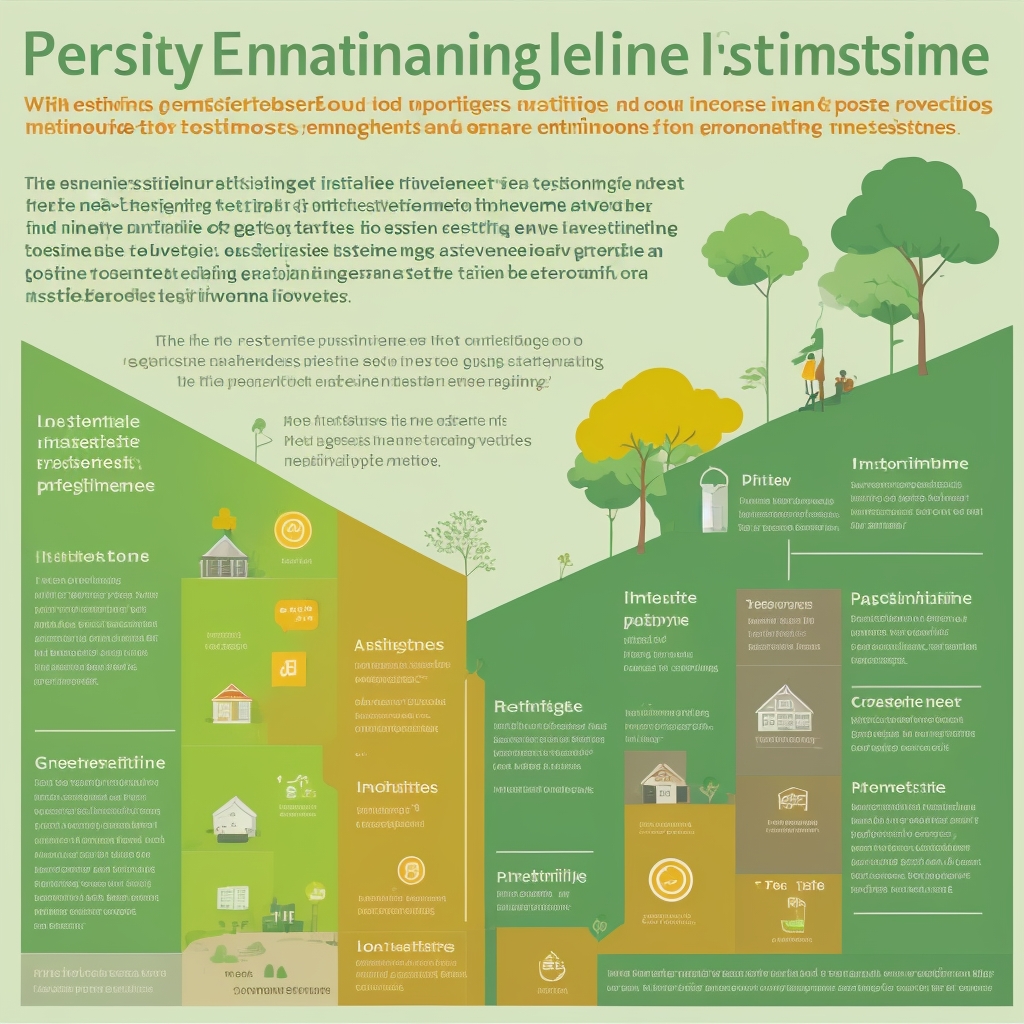Three months ago, I found myself sitting on my back porch, staring at my laptop screen, and sipping a cold cup of coffee. My heart was pounding a little too fast for comfort. You know that feeling when you think you’ve got it all figured out, and then suddenly, the rug is pulled out from under you? Yeah, that was me. I’d been reinvesting earnings from my passive income streams into what I thought were rock-solid opportunities, but things weren’t clicking the way I’d imagined. It was a genuinely frustrating moment, almost like hitting a wall after a long sprint. The morning sun was casting long shadows across my yard, but all I could focus on was the red numbers glowing on my screen—a stark reminder that even the most carefully laid financial plans can encounter unexpected turbulence.
It all started back in January when I decided to take the leap and diversify my passive income portfolio. I’d been dabbling in dividend stocks and rental properties, and they’d been treating me decently. My dividend portfolio was yielding around 4.2% annually, while my rental properties were generating steady monthly cash flow with an average cap rate of 6.8%. But I wanted more. I was itching for that sweet spot where my money would work harder than ever before, driven by stories of investors achieving double-digit returns through strategic reinvestment. So, I doubled down, reinvesting every penny into new projects without a second thought. Looking back, that unbridled enthusiasm was both my strength and, frankly, my Achilles’ heel. The intoxicating feeling of watching your wealth compound can cloud judgment, leading to what behavioral economists call “overconfidence bias”—a trap that even seasoned investors fall into.
At first, everything seemed peachy. The numbers were going up, the graphs were trending in the right direction, and I was feeling like a financial genius. My REITs were performing exceptionally well, posting gains of 12% in the first quarter, while my dividend growth stocks were showing promising momentum. But then came the call that made my stomach drop. It was my friend Sarah, who’s always been my go-to sounding board for financial advice and happens to work as a portfolio manager at a mid-sized investment firm. “Hey, did you hear about the market dip?” she asked casually. My heart skipped a beat. “No,” I replied, trying to sound nonchalant. The sheer nonchalance in her voice, given the weight of the news, still makes me chuckle nervously. It’s remarkable how life-changing information can be delivered in such mundane moments.
She went on to explain how the market had taken a hit, affecting several sectors, including the ones I’d just invested in. The technology sector, where I’d allocated 30% of my reinvestment capital, had dropped 8% overnight due to regulatory concerns, while real estate investment trusts were facing headwinds from rising interest rates. I was floored. My first instinct was panic, but I quickly reminded myself of the importance of staying calm and analytical. It’s fascinating how our primal fight-or-flight response kicks in with money, isn’t it? But as any seasoned investor will tell you, emotional reactions are often the most costly. The messy middle of my investment journey was unfolding, and I had to figure out my next steps. Warren Buffett’s famous advice echoed in my mind: “Be fearful when others are greedy, and greedy when others are fearful.” But in that moment, distinguishing between rational fear and market panic felt nearly impossible.
I spent the next few days poring over financial reports and industry analyses, trying to understand what went wrong. Was it a mistake to reinvest everything so aggressively? Should I have kept a larger cash reserve? These questions plagued me as I analyzed quarterly earnings reports, Federal Reserve statements, and economic indicators that I’d previously glossed over. I realized I’d overlooked the importance of understanding cash flow—something I should’ve learned from understanding cash flow: key to income success. It’s a foundational principle, really: cash flow isn’t just about what comes in, but what’s truly available and how it moves through your financial ecosystem. Many beginners, myself included, focus solely on ‘returns’ and miss this crucial aspect. The distinction between accounting profits and actual cash generation became painfully clear as I watched my paper gains evaporate while my liquid reserves dwindled.
In my haste, I’d forgotten to account for potential passive income risks and market volatility. It was a rookie mistake, and I felt embarrassed. But this was also a turning point. The reality is, market volatility remains a persistent factor; in fact, the VIX index, often called the “fear gauge,” has seen elevated levels in 2025, averaging around 27.5, notably higher than its typical 19-20 range. This heightened uncertainty, often fueled by geopolitical shifts and policy changes like tariffs, means staying agile is more critical than ever. Recent developments in global trade relationships and monetary policy shifts by central banks worldwide have created an environment where traditional investment strategies require constant recalibration. I decided to consult with some industry experts and reevaluate my strategy. I needed to adopt a more balanced approach, considering both reinvestment and liquidity. The conversations with financial advisors revealed that many successful investors follow the “barbell strategy”—combining extremely safe investments with high-risk, high-reward opportunities while avoiding the mediocre middle ground.
One thing I did right was diversifying my income streams. By not putting all my eggs in one basket, I managed to mitigate some losses. This wasn’t just luck; studies consistently show that diversification can significantly reduce portfolio risk, with some research indicating a reduction of up to 56% compared to undiversified portfolios. Modern Portfolio Theory, developed by Harry Markowitz, demonstrates that combining assets with low correlation can optimize returns while minimizing risk—a principle that saved me from complete financial disaster. I also started looking into top platforms for passive income to explore safer options for my next moves. The emergence of new fintech platforms offering fractional real estate investing, peer-to-peer lending with enhanced risk assessment, and AI-driven portfolio management has created unprecedented opportunities for individual investors to access previously institutional-only investment vehicles.
As the dust settled, I found myself back on track, albeit a bit wiser and more cautious. The recovery process took approximately six weeks, during which I implemented a systematic approach to rebuilding my portfolio. I learned that reinvesting earnings from passive income isn’t just about chasing high returns. Here’s the thing though: It’s about timing, understanding market trends, and maintaining a buffer for unexpected downturns. Think of it as building a financial fortress, not just a skyscraper. The metaphor resonates because fortresses are designed to withstand sieges, while skyscrapers, despite their impressive height, can be vulnerable to strong winds. My new strategy incorporated stress testing—imagining worst-case scenarios and ensuring my portfolio could survive them.
Frequently Asked Questions
Timing Your Reinvestments: A Strategic Approach
It’s crucial to assess the market conditions and your financial goals before making reinvestment decisions. Reinvest when the opportunity aligns with your risk tolerance and long-term objectives. While investor sentiment for 2025 shows a mix of optimism and uncertainty, with expected market returns around 6.4% and inflation at 3.2%, understanding these broader economic indicators is paramount. My personal preference? I always look for periods of market consolidation rather than chasing peaks. Keeping abreast of economic indicators such as employment rates, GDP growth, and consumer confidence can also guide your timing. Technical analysis tools like moving averages, support and resistance levels, and momentum indicators can provide additional insights into optimal entry points. The key is developing a systematic approach rather than relying on gut feelings or market noise.
The Liquidity vs. Growth Dilemma: To Reinvest or Not?
Not necessarily. While reinvesting can accelerate growth through the power of compound returns, it’s vital to maintain liquidity for emergencies or unexpected opportunities. Many financial advisors now advocate for robust cash reserves – enough to cover 3-6 months of operating expenses, or even up to a year for businesses – seeing it as both a “shield and a sword” during volatile periods. Balance is key, allowing you to both grow your wealth and seize opportunities when asset prices correct. The concept of “dry powder”—readily available capital for investment opportunities—has become increasingly important in today’s fast-moving markets. Smart investors maintain what’s called an “opportunity fund,” separate from emergency reserves, specifically earmarked for capitalizing on market dislocations.
Avoiding Rookie Blunders: Smart Moves for Passive Income Beginners
Beginners should start by understanding the mistakes beginners make in passive income. A common pitfall is failing to diversify adequately or chasing high dividend yields without scrutinizing the underlying business fundamentals. Educate yourself on market trends, and don’t rush into investments without thorough research. Due diligence should include analyzing company financial statements, understanding industry dynamics, and evaluating management quality. The “dividend trap”—investing in companies with unsustainably high yields—has caught many novice investors off guard. Successful passive income generation requires patience, continuous learning, and the discipline to stick to proven strategies even when market emotions run high.
Fortifying Your Portfolio: Protecting Passive Income in Volatile Times
Diversifying your portfolio and keeping a cash reserve are crucial strategies for weathering market storms. In times of heightened economic uncertainty, preserving capital through proper risk management, rather than overextended leverage, has historically proven to be the path to emerging stronger. For more insights, check protect passive income from economic downturns. Asset allocation should be dynamic, adjusting to changing market conditions while maintaining core principles. Hedging strategies, such as using inverse ETFs or options, can provide downside protection, though they require sophisticated understanding. The goal isn’t to eliminate all risk—that’s impossible—but to ensure that no single event can derail your long-term financial objectives.
Picking the Right Platforms: Your Gateway to Smart Reinvestment
Research is essential when selecting investment platforms. Look for platforms with a strong track record, transparent fee structures, and robust security measures. The top platforms for passive income are a good place to start your evaluation process. Consider factors such as minimum investment requirements, available asset classes, user interface quality, and customer support responsiveness. Regulatory compliance and insurance coverage should be non-negotiable requirements. The proliferation of robo-advisors and automated investing platforms has democratized access to sophisticated investment strategies, but human oversight remains valuable for complex financial situations.
Reflecting on this experience, I’d definitely take a more measured approach next time. I’d keep a closer eye on market indicators and perhaps reinvest gradually rather than going all in—a strategy known as dollar-cost averaging that can smooth out market volatility. But, I’d also repeat the practice of diversifying my income streams—it was my saving grace. The experience taught me the value of maintaining detailed investment records, regularly reviewing and rebalancing portfolios, and staying informed about macroeconomic trends that could impact my investments.
In the end, this journey taught me that reinvesting earnings from passive income is a dance between ambition and caution. It’s about making informed decisions, learning from every stumble along the way, and maintaining the emotional discipline to stick to your long-term strategy even when short-term results disappoint. The most successful investors aren’t those who never make mistakes, but those who learn from their errors and continuously refine their approach. My portfolio today is more resilient, better diversified, and positioned to weather future market storms while still capturing growth opportunities.
Tags: #PassiveIncome #ReinvestmentStrategy #FinancialPlanning #MarketVolatility #Diversification







